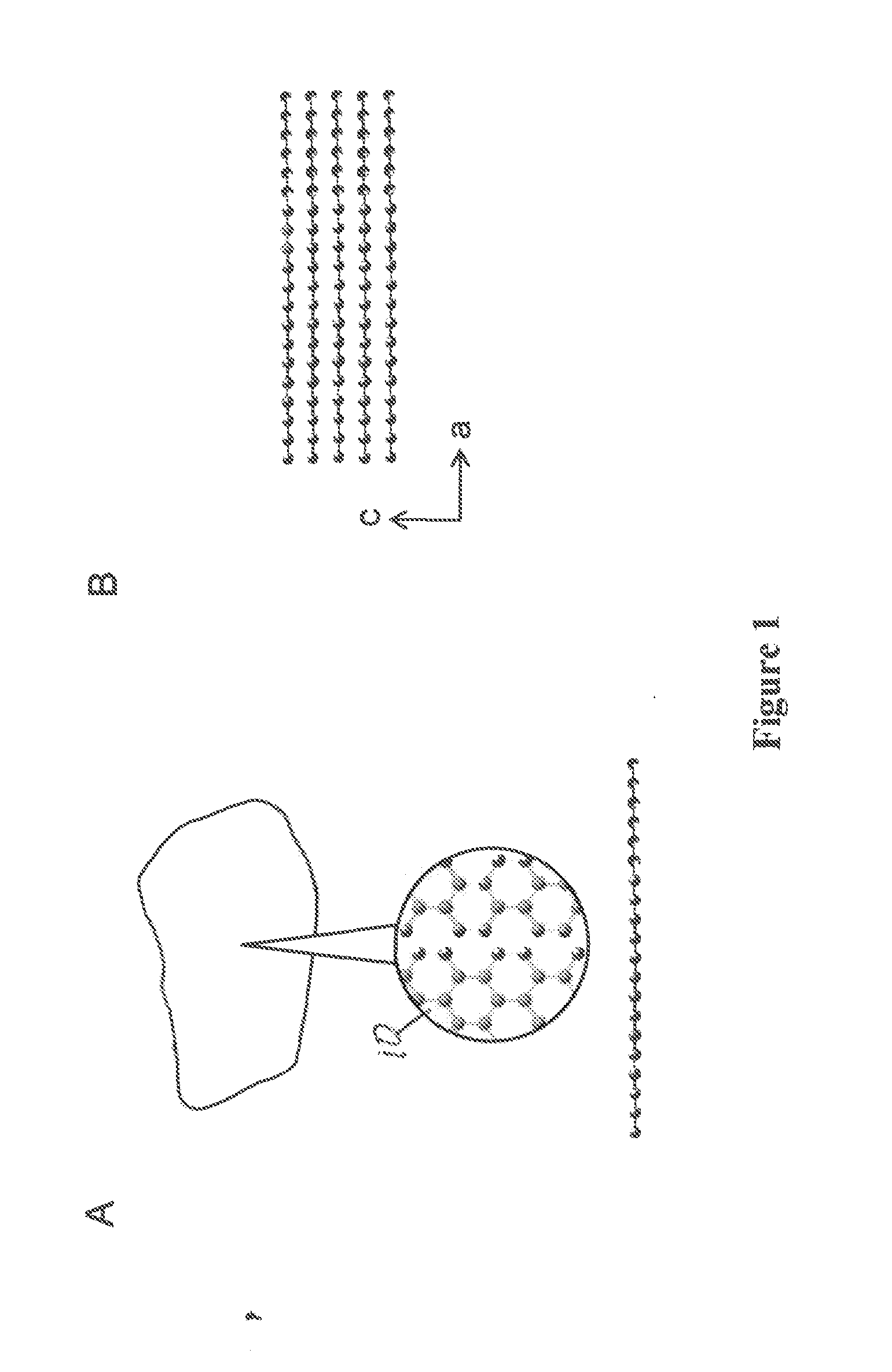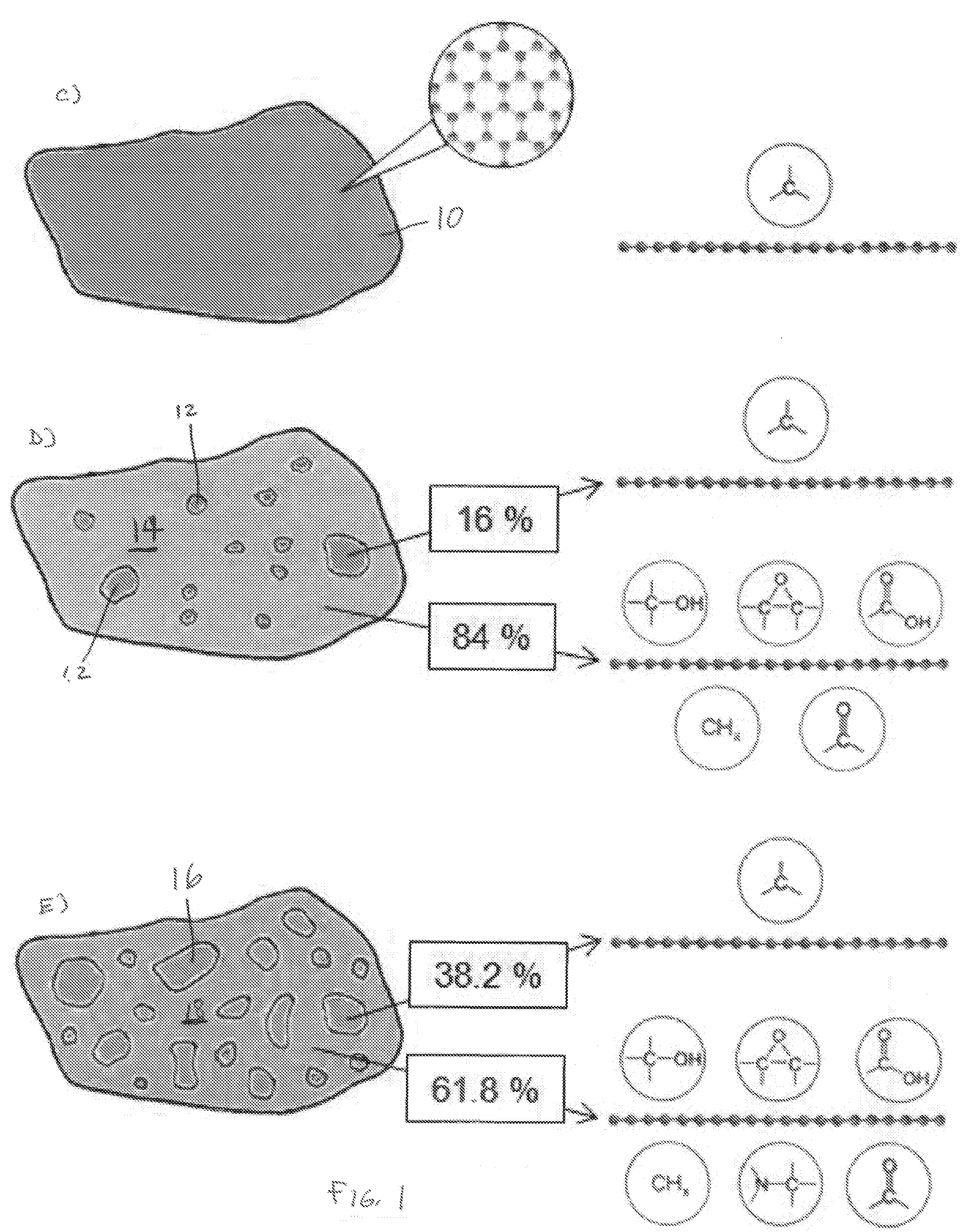Foams of graphene, method of making and materials made thereof
- Summary
- Abstract
- Description
- Claims
- Application Information
AI Technical Summary
Benefits of technology
Problems solved by technology
Method used
Image
Examples
example
[0072]A suitable open cell foam material can be made by using 5-2000 nm diameter silica nanoparticles synthesized by the standard Stroller process [W. Stober et al. J. Colloid Science, 26(1), 62-69 (1968)]. These particles are synthesized in water of basic pH and may be made directly in the IPDA-GO water solution. Moreover, if made in a separate water solution before combining with IPDA-GO in water solution, water soluble, oligomeric or polymeric molecules may be grafted to the silica surfaces to create a hydrophilic surface coating [S. Simovic and C. Prestidge, Langmuir 19(9), 3785-3792 (2003)] that can later be advantageously fused or reacted to form more stable silica regions within the encapsulating shells. A water solution of the IPDA-modified graphene oxide sheets along with the silica nanoparticles is made. Concentrations of these two types of particles may be varied to subsequently produce solid encapsulating shells comprised of greater or lesser amounts of each component. B...
PUM
| Property | Measurement | Unit |
|---|---|---|
| Dispersion potential | aaaaa | aaaaa |
| Structure | aaaaa | aaaaa |
| Miscibility | aaaaa | aaaaa |
Abstract
Description
Claims
Application Information
 Login to View More
Login to View More - R&D
- Intellectual Property
- Life Sciences
- Materials
- Tech Scout
- Unparalleled Data Quality
- Higher Quality Content
- 60% Fewer Hallucinations
Browse by: Latest US Patents, China's latest patents, Technical Efficacy Thesaurus, Application Domain, Technology Topic, Popular Technical Reports.
© 2025 PatSnap. All rights reserved.Legal|Privacy policy|Modern Slavery Act Transparency Statement|Sitemap|About US| Contact US: help@patsnap.com



